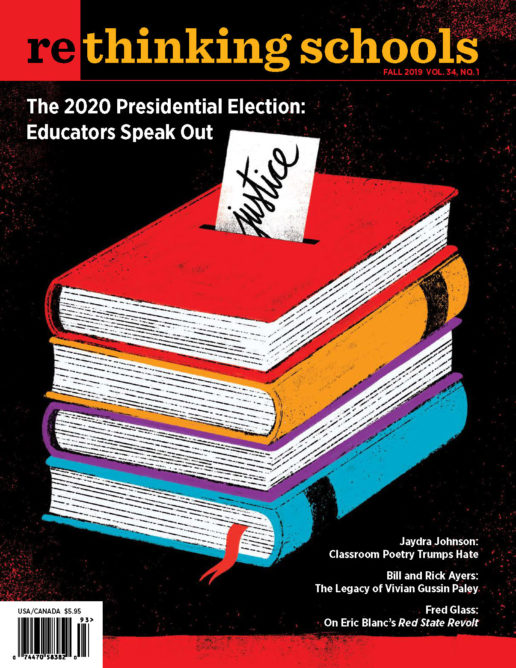Vivian Gussin Paley: An Appreciation

Vivian Paley was a lifelong, everyday teacher who documented the world of her classroom in a series of reports: 13 funny, complex, insightful, and dazzling books that made the experiences and thoughts of young children vivid and visible.
Her books illuminate the big issues of our times — white supremacy, sexism, justice, and peace — through the keenly observed details of a group of youngsters learning to live together. Teachers at every level should read her manifesto on justice, You Can’t Say You Can’t Play, and her subtle exploration of race in The Girl with the Brown Crayon. Vivian herself was filled with wonder — the impression she gave was one of an all-consuming, undisguised curiosity rarely seen in an adult — and her awe and admiration spill onto every page.
She was most at home in the company of little ones, exploring and questioning, checking things out, conducting everyday experiments arm-in-arm and shoulder-to-shoulder with the young. Children recognized her as a fellow traveler, took to her naturally, and invited her to join them on their endless searches and excursions. She never refused them, and willingly followed along — their magical, luminescent teacher.
On July 26, 2019, the light went out, and Vivian Gussin Paley passed away.
Paley’s empathy and curiosity found her in the block corner, the playground, the sandbox — it was there that she investigated and uncovered the interests and purposes, questions and needs, capabilities and intentions of the children she taught. She observed and took note, seeing each child as an unruly spark of meaning-making energy, a creature of incalculable value on a journey of discovery and surprise. Each was both the one-of-one, and simultaneously one of the many, a unique part of the community.
Paley taught for 40 years at the University of Chicago Laboratory Schools, founded by John Dewey more than 100 years before and, like Dewey, she practiced teaching as an intensely relational activity. She realized that she could never build a relationship with someone she didn’t know, someone invisible to her, or someone perceived exclusively through the distorted lenses of stereotype and clich, and this led her to listening and observing as her central teaching posture.
Seeing children as “targets of instruction,” offering shiny rewards or chilling punishments, testing or ranking them on some putatively objective measure was offensive to her teaching soul. So was delivering prefabricated lessons to passive, seemingly obedient students — this not only denied kids the fullest range of intelligences and opportunities they might access, but also because it cut her off from a multitude of occasions to see children as whole and propulsive learners. Teaching was for her a cause for infinite delight and even celebration — gathered before her, after all, was humanity itself in all of its wild diversity and magnificent glory, immense and mysterious, capable of everything and immune to nothing.
No standardized test, no linear statistical printout could ever capture the complexity and the beauty of young human beings exploring their world with agency and confidence. In her own bottom-up way, she made a devastating critique of white teaching and white knowledge claims. In her groundbreaking 1979 book White Teacher, she shifted the focus from the “problem of the Black kids” to an exploration of the contradictions and limitations of whiteness in schools and classrooms. Here she reflects self-critically on the many ways white teachers — notably herself — are unable to think clearly and honestly about race. This was an early and important contribution to anti-racist educational pedagogy.
Students learned in her classroom how to grapple — both in the present and in the future — with a question central to the spirit and heart of democracy, a question both simple and profound, straightforward and twisty: What’s your story? How will you tell it fully and fairly?
Paley said that storytelling was immediately and intuitively understood and desired by every child over the age of 2.
Vivian Paley’s teaching was practiced in preschool classrooms, and yet the lessons she learned there inspire and guide teachers today at every level, kindergarten through graduate school. Listening to students, building relationships and community, and pursuing questions worthy of deep exploration are the hallmarks of all good teaching. Indeed, her student-centered approach echoes Paulo Freire’s admonition that our students should be encouraged to read the world as they learn to read the word.
Who are you in the world? How is your story like or unlike other stories? What’s next? In telling their stories students relied on Vivian Paley — their smart and sensitive teacher — to acknowledge and appreciate their minds and their spirits, their perspectives and their lived experiences.
>> Click here to subscribe to Rethinking Schools — 1 year for just $22.85 <<

